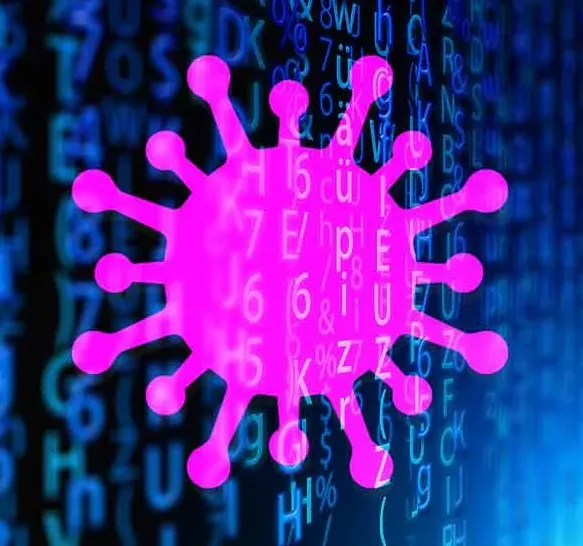Viruses are a threat that we encounter both in our bodies and in the digital world. Whether attacking human cells or computer systems, viruses share a common goal: they invade, spread, and disrupt. While biological viruses cause illness in humans, computer viruses target digital systems, often leading to data loss, system crashes, and stolen information. But how similar are they? Let’s dive into the key differences and similarities between these two types of viruses and explore how we can defend against them.
Key Takeaways
- Target: Biological viruses infect living organisms; computer viruses target digital systems.
- Replication: Biological viruses hijack cells; computer viruses replicate through code and software.
- Spread: Biological viruses spread through air, contact, or fluids; computer viruses spread via email, downloads, or networks.
- Defense: Biological defenses include vaccines, hygiene, and public health; digital defenses involve antivirus software, firewalls, and updates.
- Evolution: Both mutate—biological viruses evolve naturally, while computer viruses change through human modification.
- Impact: Both can cause widespread damage if left unchecked—biological viruses affect health, while computer viruses affect data integrity.
What Is a Biological Virus?
A biological virus is a tiny agent that cannot live or reproduce on its own. Instead, it needs a living cell to hijack and multiply. Once inside, it takes control of the cell’s machinery to produce more virus particles, often causing illness in the process. These viruses spread through physical contact, the air, bodily fluids, or even insects.
How It Works
A biological virus enters a living organism and attaches to cells. It then forces the cells to make copies of the virus. This process damages the body, weakens the immune system, and results in symptoms like fever, fatigue, and cough. Common ways viruses spread include contact with infected surfaces, respiratory droplets, or insect bites.
Real-World Examples
- Influenza (Flu): A seasonal virus that spreads easily, especially in crowded environments.
- HIV: Attacks the immune system, requiring long-term management.
- COVID-19: A global pandemic caused by the SARS-CoV-2 virus, which spreads via respiratory droplets.
What Is a Computer Virus?
A computer virus is malicious software that attaches to files and spreads when those files are opened. It can corrupt data, slow down systems, or steal information, usually triggered by user actions like clicking on a link or downloading an infected file. In this way, computer viruses function as digital parasites, thriving on unprotected devices.
How It Works
A computer virus is a piece of malicious code designed to infect digital systems. Similar to biological viruses, computer viruses need a host to spread. They hide in seemingly legitimate files or software programs, spreading when users unknowingly run them. These viruses can also spread through infected links or USB devices.
Common Types of Computer Viruses
- File Infector Viruses: Attach to programs and spread when the infected program is opened.
- Macro Viruses: Hide within documents or spreadsheets.
- Worms: Self-replicating viruses that spread across networks without user intervention.
- Ransomware: Locks users out of their files until a ransom is paid.
Key Differences Between Biological and Computer Viruses
| Aspect | Biological Virus | Computer Virus |
|---|---|---|
| Host | Living organisms | Computers or networks |
| Replication | Uses host cells to reproduce | Uses software or code to replicate |
| Transmission | Air, fluids, contact, vectors | Emails, downloads, USBs, networks |
| Symptoms | Fever, fatigue, cough, illness | System slowdown, crashes, data loss |
| Treatment | Vaccines, antivirals, public health measures | Antivirus software, system updates, firewalls |
| Mutation | Evolves naturally over time | Code rewritten or updated by attackers |
Surprising Similarities
Although biological viruses and computer viruses differ in their physical nature, they share several similarities:
- Both exploit weaknesses in their environment (immune systems for biological viruses, network vulnerabilities for computer viruses).
- Both evolve to become harder to detect or stop.
- They spread rapidly when there is little protection.
- Both require robust defenses: immune systems for humans, cybersecurity tools for computers.
Defending Against Biological Viruses
To protect ourselves from biological viruses, we rely on:
- Vaccination: Prepares the immune system to fight viruses before they cause harm.
- Hygiene: Regular hand washing, masking, and disinfecting surfaces to reduce spread.
- Public Health Measures: Quarantines, contact tracing, and health advisories help control outbreaks.
Defending Against Computer Viruses
To protect digital systems from viruses, we use:
- Antivirus Software: Scans and removes malicious files from the system.
- System Updates: Regularly updating software patches vulnerabilities that viruses may exploit.
- User Education: Teaching users to avoid clicking on suspicious links, downloading untrusted files, or using insecure devices.
- Data Backups: Ensures data can be restored in case of infection or loss.
Final Thoughts
Biological and computer viruses may appear to be very different—one is organic and the other digital—but both serve the same purpose: to invade, spread, and disrupt. Understanding their similarities and differences can help us develop better defenses, whether it’s with a vaccine or an antivirus program. In both the physical and digital realms, prevention is essential. Strong protective measures, from hygiene to system updates, are vital to stopping viruses before they cause damage.







